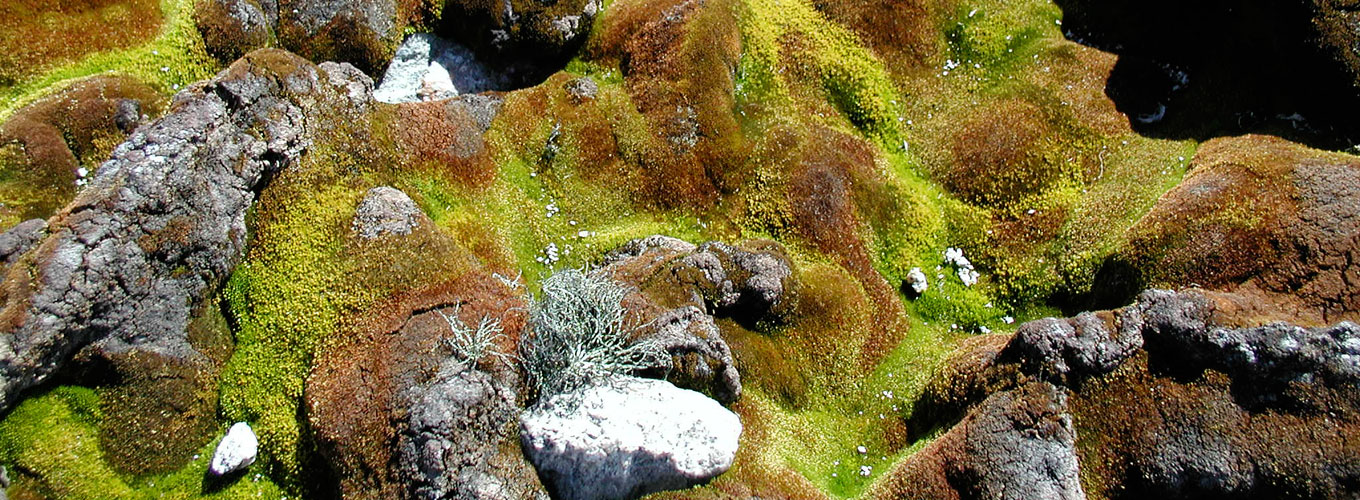Impact: Studying Antarctic vegetation to understand past climate change adaptation and inform future conservation strategies
To live in Antarctica plants and animals must be capable of surviving the long cold, dark winters and take full advantage of the short summers.
It is a continent so hostile and remote that very few people get to experience its natural beauty.
Nevertheless, humans are impacting life on Antarctica by the depletion of the ozone layer, the increasing greenhouse effect, and even locally with fuel spills at polar stations.
Some parts of Antarctica are among the most rapidly warming regions on the planet. However, the Antarctic continent is so remote that there are few long-term studies able to establish what impacts these global changes are having on the region’s biodiversity.
Antarctica is completely devoid of trees and shrubs, with terrestrial vegetation consisting mostly of mosses and lichens. These occupy the less than two per cent of the continent that is free of snow and ice in summer.
Professor Sharon Robinson and her team of postdoctoral researchers, PhD and Honours students have been visiting this frozen wilderness for 19 years to study these remote communities of plants.
The group, in collaboration with other universities and science organisations, is developing modern techniques to determine how Antarctic plants are adapted to survive extreme conditions and how they are coping with climate change and the impacts of accidental fuel spills.
This research has already influenced management plans for Antarctica Specially Protected Areas, helped establish the only State of the Environment Indicator for vegetation in Antarctica and is contributing to the development of a continent-wide Antarctic Near-Shore and Terrestrial Observing System.
It has also fostered some important technological advances in monitoring Antarctic ecosystems. In order to detect changes in very slow growth rates of mosses and lichens - about one millimetre per year – a partnership has been established with the Australian Nuclear Science Technology Organisation to radiocarbon date moss shoots.
The team are also working with chemistry researchers to identify chemical signatures within the moss shoots which should indicate how the environment has changed over the last century and allow the tracking of changes in ultraviolet (UV-B) radiation and water availability.
New technologies are being employed to improve the monitoring of remote areas, including the use of drones that can take fine-resolution imagery of moss beds at centimetre-level resolution. From these images, moss health can be detected without damaging these fragile ecosystems.
By establishing a long-term record of plant adaptation and growth on Antarctica, the UOW research team and their collaborators are contributing vital knowledge of change in this ecosystem over time that will continue to inform its ongoing preservation for generations to come.
- FACULTY OF SCIENCE, MEDICINE AND HEALTH, UOW
Professor Sharon Robinson
Dr zbynek Malenovsky
Dr Mick Ashcroft
Professor Paul Keller
Associate Professor Di Jolley
Professor Mark Dowton
Many Honours and PhD students - UNIVERSITY OF TASMANIA
Dr Arko Lucieer - AUSTRALIAN NUCLEAR SCIENCE AND TECHNOLOGY ORGANISATION
Dr Quan Ha - BRITISH ANTARCTIC SURVEY, UK
Dr Dominic Hodgson - UNIVERSITY OF CAMBRIDGE, UK
Professor Howard Griffiths - UNIVERSITY OF VIENNA, AUSTRIA
Dr Wolfgang Wanek - QUEENSLAND UNIVERSITY OF TECHNOLOGY
Professor Kerrie Mengerson - AUSTRALIAN ANTARCTIC DIVISION
Dr Ben Raymond
John McKinlay
Dr Jane Walsey
Copyright © 2014 University of Wollongong. CRICOS Provider No: 00102E Privacy | Disclaimer & Copyright Info | Site Map

